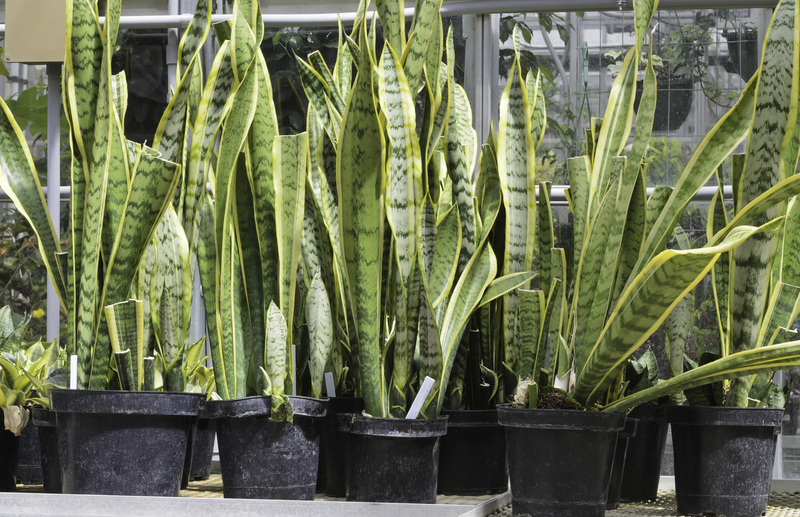Transforming Urban Environments with Vertical Gardens
Posted on 09/06/2025
Transforming Urban Environments with Vertical Gardens
In today's rapidly expanding cities, the need for innovative solutions to combat urbanization's environmental and social challenges has never been greater. One such solution, vertical gardens, is revolutionizing the way we design, live, and interact with urban spaces. This article explores how vertical gardens are transforming urban environments, delving into their benefits, the technology behind them, and their impact on city life, while providing practical insights for their implementation.
What Are Vertical Gardens?
Vertical gardens, also known as living walls or green walls, are structures where various types of plants are grown vertically, often supported by specially engineered frames and irrigation systems. These installations can be integrated into both the interior and exterior of buildings, from residential dwellings to towering office blocks and urban infrastructure such as bridges or sound barriers.
History and Evolution of Vertical Greenery
While the concept of growing plants on walls dates back centuries, the modern concept of vertical greening systems exploded in popularity in the late 20th century thanks to innovations by botanists and architects. Today, technological advancements enable the construction of vertical gardens in even the harshest urban environments, transforming concrete jungles into lush, vibrant ecosystems.

The Benefits of Vertical Gardens in Urban Spaces
- Improved Air Quality: Plants act as natural air filters, absorbing pollutants such as carbon dioxide and nitrogen dioxide, and releasing oxygen, resulting in healthier urban environments.
- Urban Heat Island Mitigation: Green walls provide natural insulation and cooling, reducing the impact of heat generation in dense urban areas during summer months.
- Aesthetic Enhancement: Vertical gardens transform bland concrete surfaces into colorful, dynamic facades, softening cityscapes and boosting property values.
- Noise Reduction: Living walls absorb and deflect urban noise, promoting tranquility in bustling metropolitan areas.
- Biodiversity Support: They serve as habitats for birds, insects, and beneficial microorganisms, fostering urban biodiversity.
- Psychological Wellbeing: Access to greenery and natural views has been linked to reduced stress and improved mental health among city dwellers.
- Water Management: Green walls can be designed to capture and recycle rainwater, contributing to sustainable water usage.
Vertical Gardens vs. Traditional Urban Landscaping
Unlike conventional landscaping, which often requires expansive horizontal space, urban green walls utilize vertical real estate, making them ideal for crowded cities. This spatial efficiency means even the densest urban environments can benefit from increased vegetation and its associated advantages.
Technological Innovations Driving Urban Vertical Gardens
Innovations in architecture, horticulture, and engineering have made the integration of urban living walls increasingly feasible and effective.
Key Components of a Vertical Garden
- Support Structure: Frameworks can be constructed from metal, plastic, or modular panels designed for easy installation and maintenance.
- Irrigation System: Automated drip irrigation delivers water and nutrients, ensuring plant health even in arid city environments.
- Growing Medium: Vertical gardens often replace traditional soil with lightweight substrates, like felt or foam, to reduce overall structure weight.
- Plant Selection: Native or adaptive plant species are chosen for hardiness and aesthetic appeal, sometimes including herbs and edible plants.
- Smart Technology: Sensors and mobile applications help monitor plant health, humidity, temperature, and water usage in real time.
Living Wall Design Considerations
When designing vertical gardens for urban environments, it's vital to account for orientation, sunlight exposure, local climate, and building characteristics. Ensuring easy access for maintenance and integrating advanced irrigation minimizes resource consumption and maximizes sustainability.
Famous Examples of Vertical Gardens Transforming Cities
- Musee du Quai Branly, Paris: This pioneering vertical garden by botanist Patrick Blanc uses more than 15,000 plants, acting as both an art installation and an air purifier for the museum.
- One Central Park, Sydney: An innovative residential skyscraper with extensive green facades, enhancing biodiversity and reducing the urban heat island effect across the development.
- CaixaForum, Madrid: Over 250 plant species are vertically displayed, providing a stunning focal point in a busy cultural district.
- Edificio Santalaia, Bogota: Claiming to be the largest vertical garden in the world, this building's facade stretches more than 3,100 square meters and houses over 115,000 plants.
- CityTree, Global: Compact, mobile green wall units installed in various cities across Europe and Asia, designed to filter as much air as hundreds of trees.
How Vertical Gardens Are Shaping the Future of Urban Living
Sustainable Urban Development
Urban planners and architects now view living walls as a crucial tool for sustainable development. By integrating vertical greenery, cities contribute to climate change mitigation, energy savings, and urban resilience. These green walls also support future-ready infrastructure by storing CO2 and promoting efficient land use.
Community Impact and Social Engagement
Transforming urban spaces with vertical gardens goes beyond environmental impacts; it also fosters community pride, engagement, and education. Edible vertical gardens in schools or neighborhoods bring people together, promoting food security and sustainable urban agriculture.
Economic Advantages
- Energy Savings: By naturally insulating buildings, green facades can reduce reliance on heating and cooling systems.
- Increase in Property Value: Green buildings often fetch higher market prices and attract environmentally conscious tenants and buyers.
- Job Creation: The vertical gardening industry supports new opportunities in design, horticulture, maintenance, and research.
Challenges in Implementing Vertical Gardens
Despite their many benefits, installing vertical gardens in urban environments presents certain challenges:
- Initial Cost: The upfront investment for designing and constructing a robust system can be significant, although operational costs often decrease over time.
- Maintenance: Living walls require ongoing care, such as pruning, pest management, and system repairs to maintain plant health and appearance.
- Structural Constraints: Not all buildings are suitable for supporting the added weight and moisture associated with vertical gardens.
- Water Usage: Efficient irrigation is essential to avoid excessive water consumption, especially in water-scarce regions.
Practical Steps to Incorporate Vertical Gardens in Urban Settings
For Homeowners and Residents
- Indoor Living Walls: Choose low-maintenance indoor plant species like pothos, ferns, or succulents and install modular planting systems on feature walls.
- Balcony Vertical Gardens: Small-scale setups with herbs, flowers, or vegetables can be created using recycled materials or ready-made panels.
- DIY Solutions: Upcycle pallets or containers to build personal green walls, utilizing watering cans or drip systems for easy care.
For Building Owners and Developers
- Facade Installations: Work with specialized architects and horticulturists to integrate large-scale gardens into new constructions or retrofits.
- Common Areas: Enhance communal rooftops, lobbies, and courtyards with accessible green walls to improve occupant comfort and air quality.
- Smart Maintenance: Leverage IoT technology to monitor and optimize water, nutrient, and light delivery to plants.
For City Planners and Policymakers
- Incentives: Provide tax breaks or grants for green wall projects that meet sustainability standards.
- Building Codes: Update regulations to encourage vertical greenery on new buildings or during major refurbishments.
- Public Projects: Install living walls on sound barriers, bridges, and other public infrastructure to create greener, healthier urban landscapes.
Environmental Impact of Vertical Gardens
Research has shown that green walls can reduce energy consumption for cooling by up to 20%, cut urban air particulates, and lower surface temperatures by several degrees Celsius in affected areas. By integrating native pollinator plants and water-management systems, vertical gardens support urban biodiversity and protect local ecosystems.
Supporting Urban Biodiversity
Creating microhabitats on building exteriors, green walls provide essential feeding and nesting grounds for birds, butterflies, bees, and beneficial insects, often acting as stepping stones connecting fragmented urban green spaces.

Vertical Gardens: The Future of Greener Cities
As cities continue to expand, the role of vertical gardens in transforming urban environments will only increase in importance. These living architectural features are not just attractive additions; they are vital to building resilient, healthy, and livable cities for generations to come.
Innovative design, supportive policy, and community engagement are key to successfully implementing and expanding vertical gardens worldwide. Whether as eye-catching public art or practical urban infrastructure, living walls are leading the charge toward a more sustainable future.
Conclusion
In conclusion, vertical gardens are transforming city landscapes by addressing pressing environmental, economic, and social challenges. From improving air quality and energy efficiency to enhancing mental well-being and urban aesthetics, their multifaceted benefits are clear. As more cities embrace this revolutionary approach, vertical gardens will play an increasingly pivotal role in crafting a greener, healthier, and more vibrant urban future.
To learn more about incorporating green walls into your community or building, consult with local architects, landscaping experts, or sustainability organizations to discover the best solutions for your unique urban environment.

